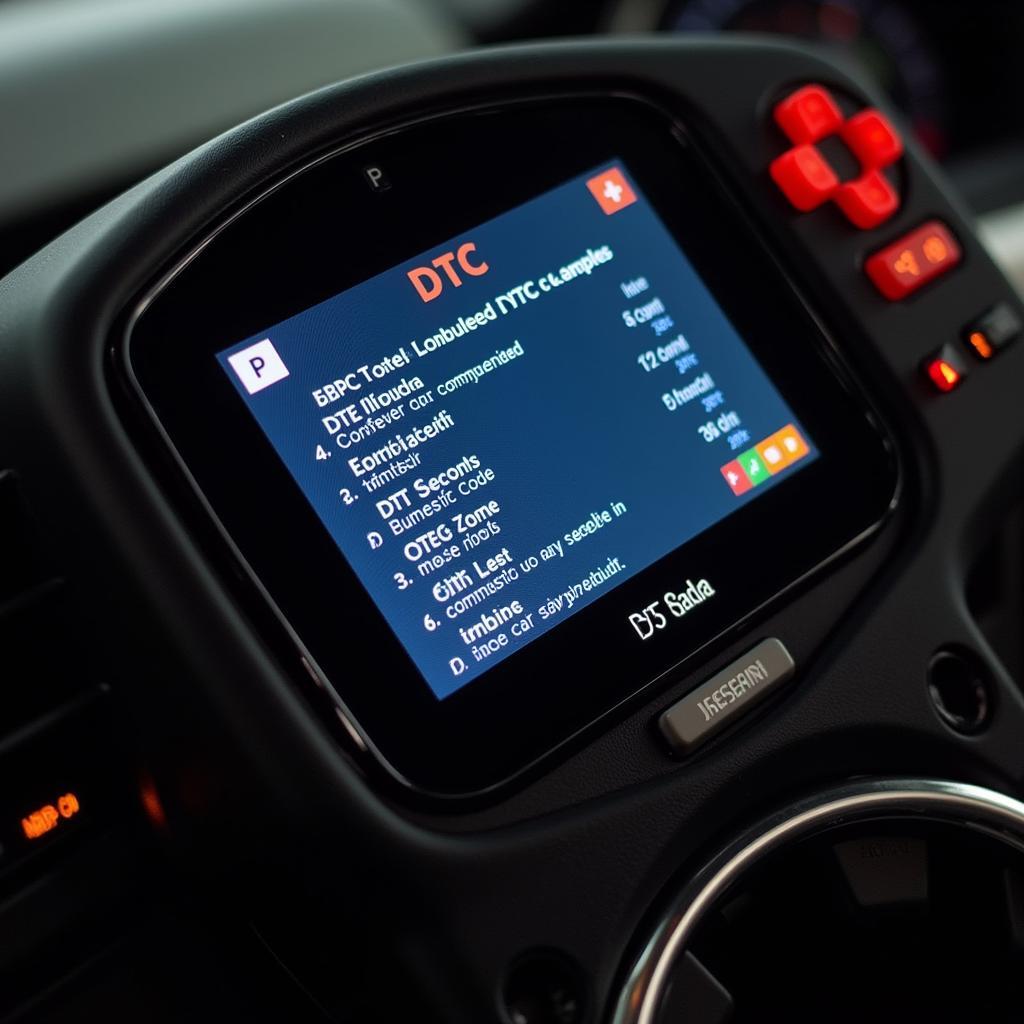Understanding what’s happening with your car when that pesky check engine light pops up can feel like deciphering ancient hieroglyphics. But what if you could understand those blinking lights and cryptic codes? Learning How To Read A Car Diagnostic Tool can empower you to understand your vehicle’s health, potentially saving you from unnecessary trips to the mechanic and costly repairs.
Demystifying the Diagnostic Tool: What Does It Do?
A car diagnostic tool, also known as an OBD2 scanner, is like a translator for your car’s computer. It plugs into your car’s OBD2 port (usually located under the dashboard on the driver’s side) and accesses the data stored in the car’s Engine Control Unit (ECU). This data includes information about your engine’s performance, emissions, and other vital systems.
 Car Diagnostic Tool Connected
Car Diagnostic Tool Connected
Understanding the Language of Your Car: Diagnostic Trouble Codes
The most important information a diagnostic tool provides is Diagnostic Trouble Codes (DTCs). These are five-character codes that indicate specific areas where your car might be experiencing issues.
Deciphering the Code: What Do the Numbers and Letters Mean?
Each DTC is structured to provide information about the problem:
-
The first character:
- “P” signifies a powertrain-related issue (engine, transmission, etc.).
- “B” indicates a body problem (airbags, power windows, etc.).
- “C” refers to chassis issues (ABS, traction control, etc.).
- “U” denotes network or communication problems between modules.
-
The second character:
- “0” indicates a generic code applicable to all OBD2-compliant vehicles.
- “1” signifies a manufacturer-specific code.
-
The third character: This pinpoints the system affected, such as:
- “1” for Emission Management
- “2” for Injector Circuit
- “3” for Ignition System
- “4” for Auxiliary Emission Controls
- “5” for Vehicle Speed Control and Idle Control System
- “6” for Computer Output Circuit
- “7” for Transmission
- “8” for Transmission
-
The fourth and fifth characters: These specify the particular problem within the system.
For example: A code like P0301 means:
- “P”: Powertrain
- “0”: Generic Code
- “3”: Ignition System
- “01”: Cylinder 1 Misfire Detected
 Diagnostic Trouble Codes on Screen
Diagnostic Trouble Codes on Screen
Do you want to know more about common car issues and their solutions? Check out our article on what does car diagnostic do.
Beyond the Codes: Unlocking Additional Data
While DTCs provide a starting point, car diagnostic tools offer much more information:
- Freeze Frame Data: Captures a snapshot of your engine’s parameters when a fault code was triggered, providing context for the issue.
- Live Data Stream: Displays real-time data from various sensors, allowing you to monitor engine performance, oxygen sensor readings, and more.
- Readiness Monitors: Shows the status of your vehicle’s emissions systems and whether they’re ready for emissions testing.
From Codes to Clarity: What to Do with Diagnostic Information
Finding a DTC doesn’t mean your car is about to break down. It’s a starting point for further investigation.
-
Record the Codes: Write down all the codes displayed on your tool.
-
Research: Use online resources or repair manuals to understand the meaning of each code and its potential causes.
-
Further Diagnosis:
- If the code points to a specific component, you can use a multimeter or other tools to test it.
- If the issue is complex or beyond your comfort level, it’s best to consult a professional mechanic.
Knowing who does diagnostic testing on cars near me can be valuable in such situations.
Empowering Car Owners: The Benefits of Reading a Diagnostic Tool
-
Early Problem Detection: Catching issues early can prevent major (and expensive) repairs down the road.
-
Informed Decisions: Understanding the codes allows you to make educated decisions about repairs and avoid unnecessary services.
-
Cost Savings: You might be able to fix some problems yourself, saving on labor costs.
-
Increased Car Knowledge: Learning to read a diagnostic tool deepens your understanding of your car’s workings.
“Knowing how to use a diagnostic tool is like having X-ray vision for your car,” says automotive expert, Sarah Williams. “It empowers car owners to take control of their vehicle’s health and make informed decisions about maintenance and repairs.”
Conclusion: Take Charge of Your Car’s Health
Learning how to read a car diagnostic tool might seem daunting at first, but it’s a valuable skill for any car owner. It’s like learning a new language – the language of your car. With a little practice and the right resources, you can decode those mysterious lights and become your car’s best advocate.
If you’re looking for affordable options, you might wonder, “who does diagnostic testing on cars for free?” While completely free options might be limited, many auto parts stores offer free code reading as a service.

Leave a Reply